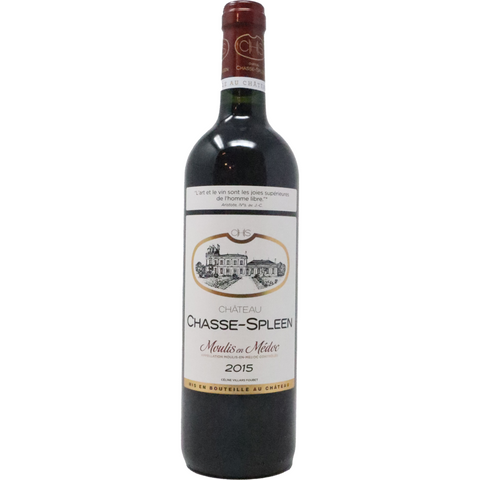
2015 Château Chasse-Spleen Moulis-en-Médoc, Bordeaux, France
Lighter-styled Bordeaux that is bright and tight, with crispness to the cassis and tartness in the cranberry. The wine is lean and with more freshness than fruit. This one is great on its own or paired with beef stew.
ABOUT THIS WINE
The fruit is from 30 year old vines that are grown in gravel, clay, and chalk soil. 73% Cabernet Sauvignon, 20% Merlot, and 7% Petit Verdot. Vinified in a combination of stainless steel tanks and wooden vats. Malolactic fermentation takes place in vat. Aging in French oak barrels (40% new) for 12-15 months before bottling.
ABOUT THIS PRODUCER
Chateau Chasse Spleen was once part of a much larger Haut-Medoc estate that sold their wine under the name of Chateau Grand-Poujeaux. The chateau itself dates its creation to the 1700s.
In 1822, their vineyards were divided as follows; half the property became Chateau Gressier-Grand-Poujeaux and the other half of the estate eventually became the foundation for what would become 3 different Bordeaux estates; Chateau Maucaillou, Chateau Poujeaux-Theil, and of course, Chateau Chasse Spleen.
There are numerous stories trying to explain the name of Château Chasse-Spleen. The best possibilities are poetic. The first version is, the name was inspired from a visit by Lord Byron in 1821. During that visit, Bryon was so moved, he was quoted, “Quel remede pour chasser le spleen”, which when loosely translated means, “What remedy to remove the spleen?”
The other equally poetic explanation is attributed to the poem Spleen, whose author Charles Baudelaire also visited Château Chasse-Spleen.
Château Chasse-Spleen remained the property of the Castaing family until it was sold just before World War 1 to a German family of wine merchants. After the outbreak of World War I, Château Chasse-Spleen was confiscated as enemy property and sold at an auction in 1922 to the Lahary family.
Details:
| Grape(s) | Cabernet Sauvignon, Merlot, Petit Verdot |
| Farming | Sustainable |
